By Mark McConville
STRIKING PICTURES included in a new book have revealed the often forgotten invasion of the French Riviera by the Allies two months after D-Day that play a pivotal role in winning World War Two.
The incredible images show German prisoners of war in St. Tropez, France, the face of battle with men of 157th Infantry Regiment, 45th Division who had spent a week surrounded in hostile territory in December 1944 and landing on the beach at Pampelonne on August 15 with men who had sailed from Naples on the USS Samuel Chase.
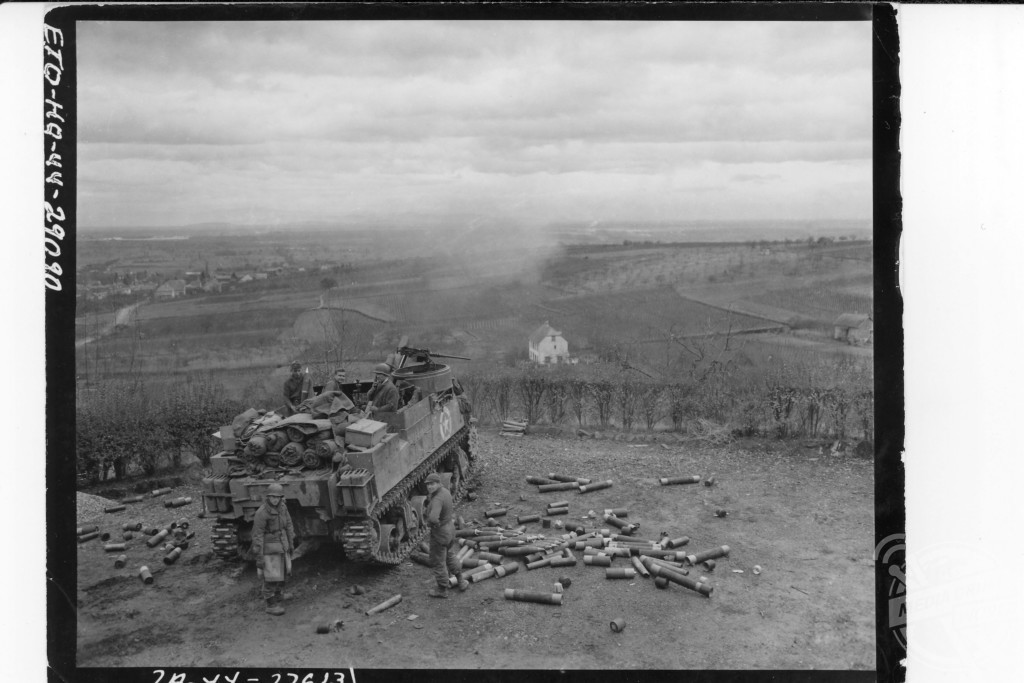
Rhine Valley in December—the litter of shell cases shows the size
of the fire missions. By the beginning of September VI Corps had
advanced from the Riviera to the Moselle in less than a month. They
were getting tired and artillery was playing an increasingly important
role.
Mediadrumimages / Simon Forty and Leo Marriott
Other stunning shots show men of Armée B march on Boulevard de Strasbourg, during the parade celebrating the city’s recent liberation, August 28, an M4A1 crossing the Durance river at Mirabeau and the French Resistance who played a major role in the invasion after being supplied by airdrops and the British Special Operations Executive.
The images are showcased in Simon Forty and Leo Marriott’s new book, From the Riviera to the Rhine, which is published by Casemate.
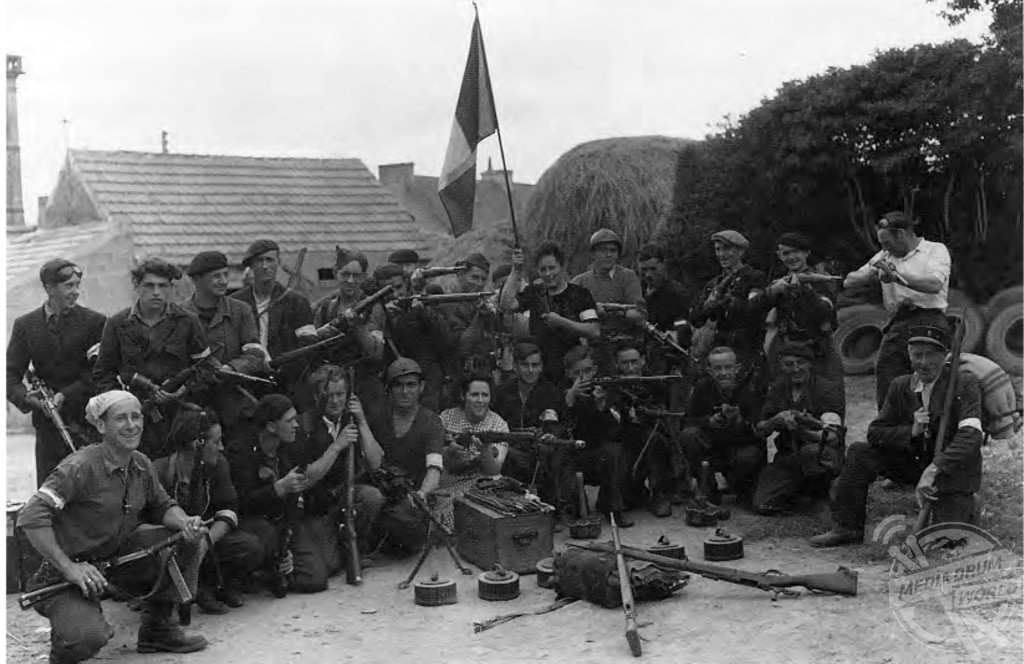
and the SOE—the British Special
Operations Executive—the
French Resistance played a
significant role in the invasion. S
Mediadrumimages / Simon Forty and Leo Marriott
“Two months after D-Day, just as the battle of Normandy was reaching its climax, with all eyes on the Falaise Pocket, the Allies unleashed the second invasion of France not in the Pas de Calais but the French Riviera,” write the authors.
“Immaculately planned, effectively undertaken, the Allies quickly broke out of their bridgehead, drove 400 miles into France in three weeks, and liberated 10,000 square miles of French territory while inflicting 143,250 German casualties.
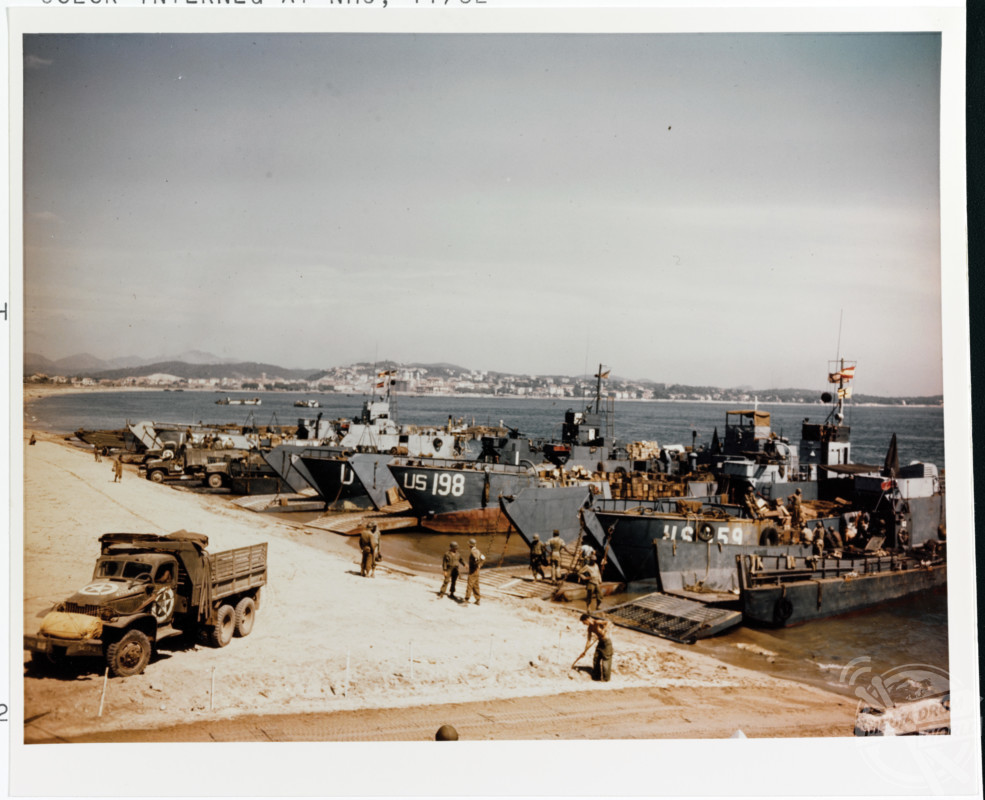
LCTs present include LCT-198 and LCT-559. Note the matted
ramp in foreground for DUKWs.
Mediadrumimages / Simon Forty and Leo Marriott
“On September 10 they linked up with Patton’s Third Army and advanced into the Vosges Mountains, taking Strasbourg and holding the area against the Germans’ final big attack in the west: Operation Nordwind in January 1945.
“US Seventh Army and 6th Army Group undertook a successful campaign placing a third Allied army group with its own independent supply lines, in northeastern France at a time when the two northern Allied army groups were stretched to the limit.
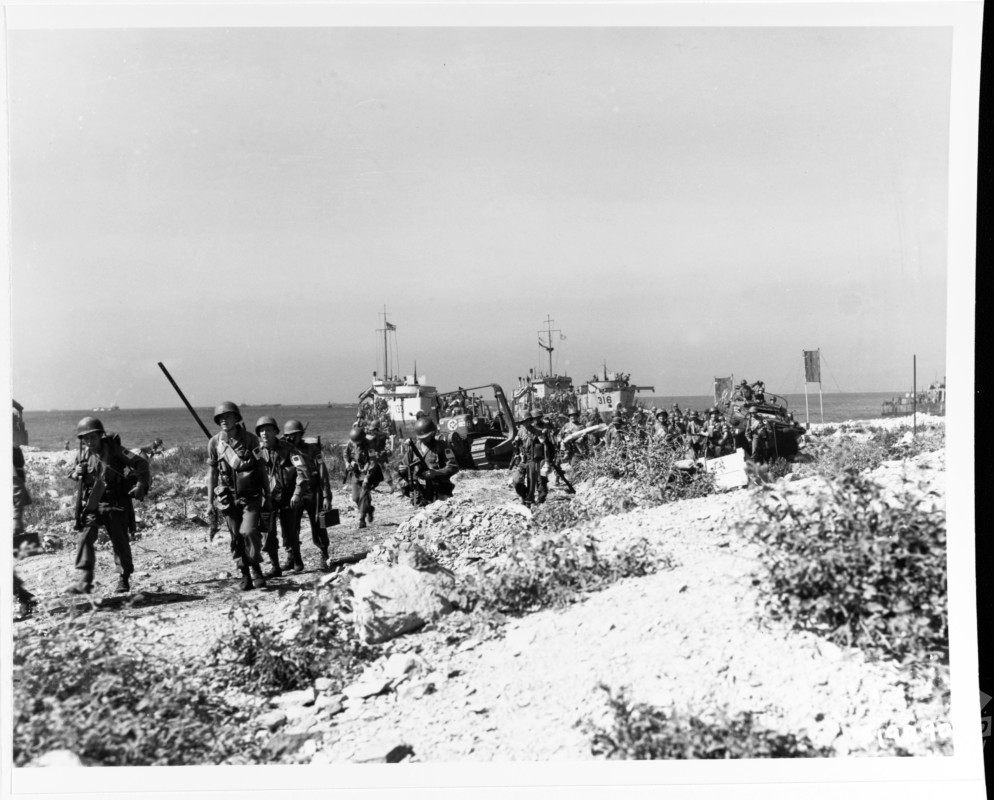
the background are the British LCI-133 and LCI-316. Built in the
United States, these large infantry landing craft were armed with
a 2pdr QF Mk VIII and three 20mm Oerlikons. They could carry
188 troops or 75 tons of cargo.
Mediadrumimages / Simon Forty and Leo Marriott
“Without this force the Allies would have struggled to hold the frontage to Switzerland and Third Army would have been exposed to attack in its southern flank-something that could have had disastrous repercussions particularly during the Ardennes offensive of December 1944.
“The images of palm trees and azure seas obscure our view of this campaign. It was no cakewalk. The Germans knew the Allies were coming and had strong defences in the area.
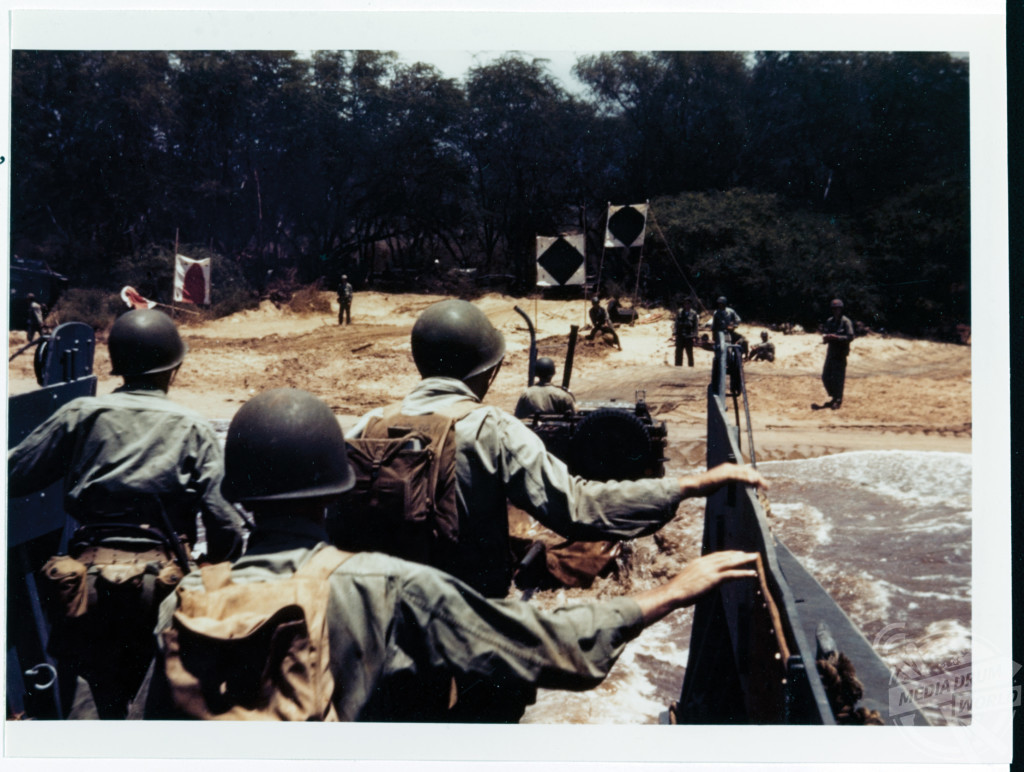
Pampelonne on August 15, these
men had sailed from Naples on the
USS Samuel Chase a veteran LCVP
which had already seen action
during Operations Torch, Husky,
Avalanche, and Neptune, and
would go on (after an overhaul)
to the Pacific.
Mediadrumimages / Simon Forty and Leo Marriott
“ A shortage of landing craft, vehicles, and matériel meant that the US Seventh and French First armies were restricted in the assault. The heavy fog and anti-glider defences made for a difficult airborne assault, but it was carried out effectively, the amphibious assault was textbook in execution and the invasion of southern France ended up as a significant victory.
“But the story of 6th Army Group wasn’t finished. Taking up a position on the east flank of Third Army it fought its way through the Vosges and withstood the Germans’ last throw: Operation Nordwind-the vain attempt to relieve pressure on the Ardennes assault by attacking in the Vosges. Heavy fighting pressed hard towards Strasbourg but the Allies were ultimately victorious, inflicting severe losses on the Germans.”
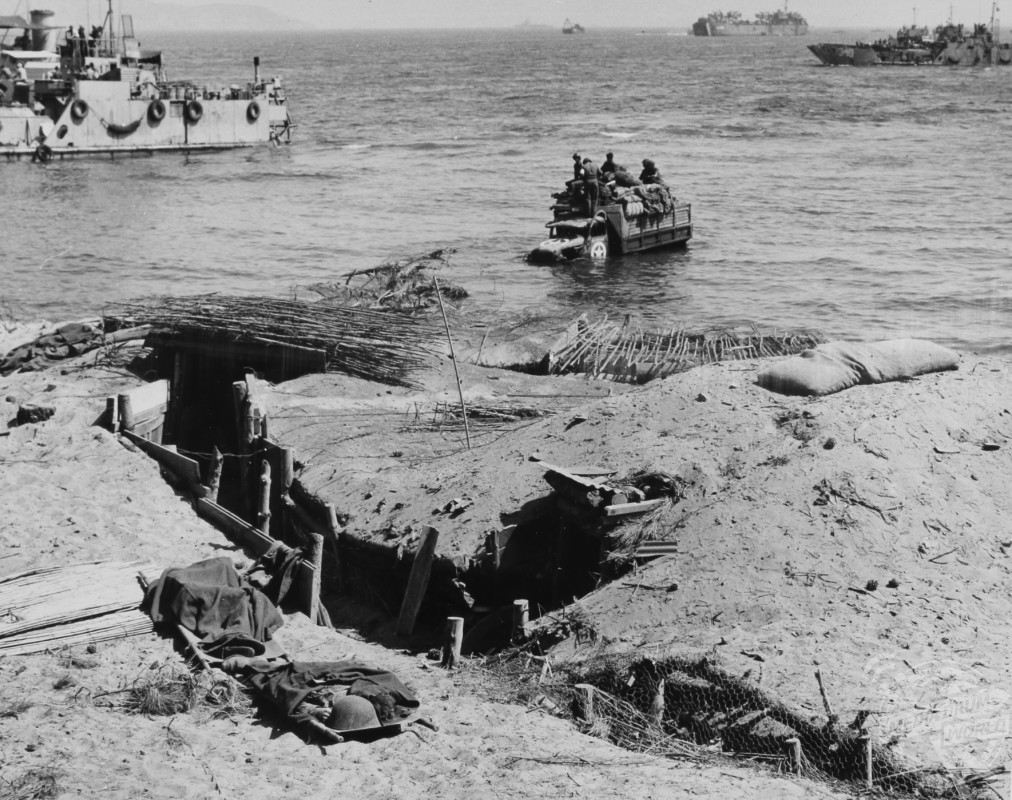
in Alpha Sector. In the sea,
soldiers on a stranded truck wait
to unload its contents.
Mediadrumimages / Simon Forty and Leo Marriott










